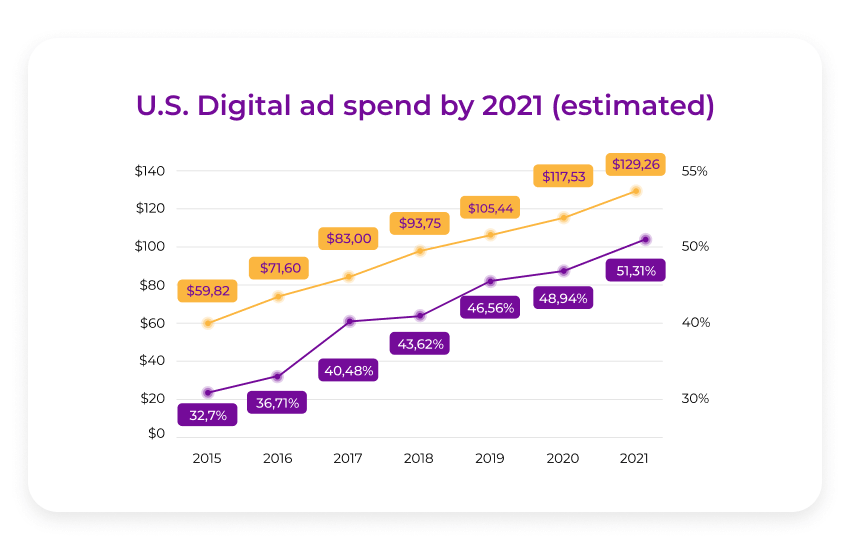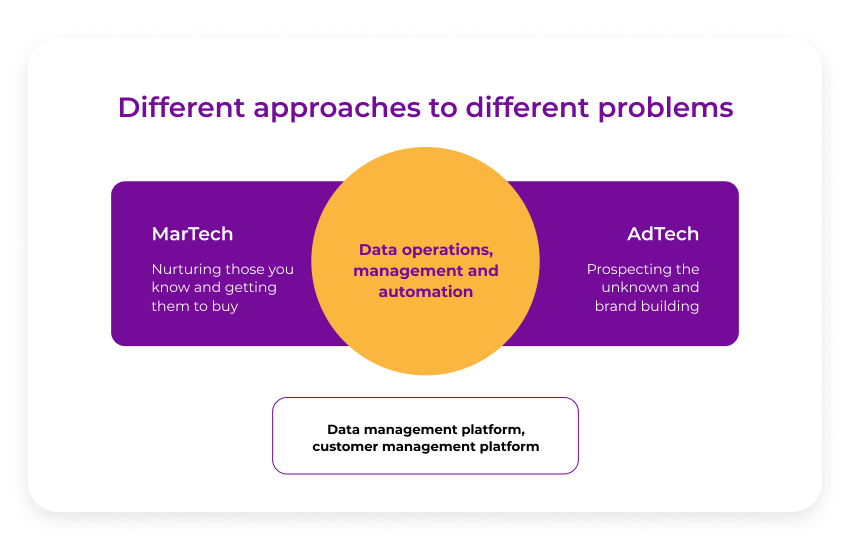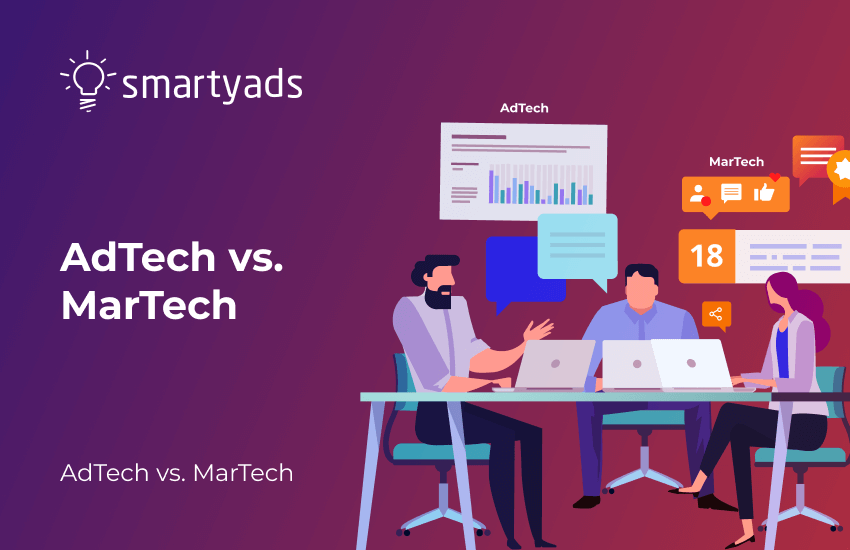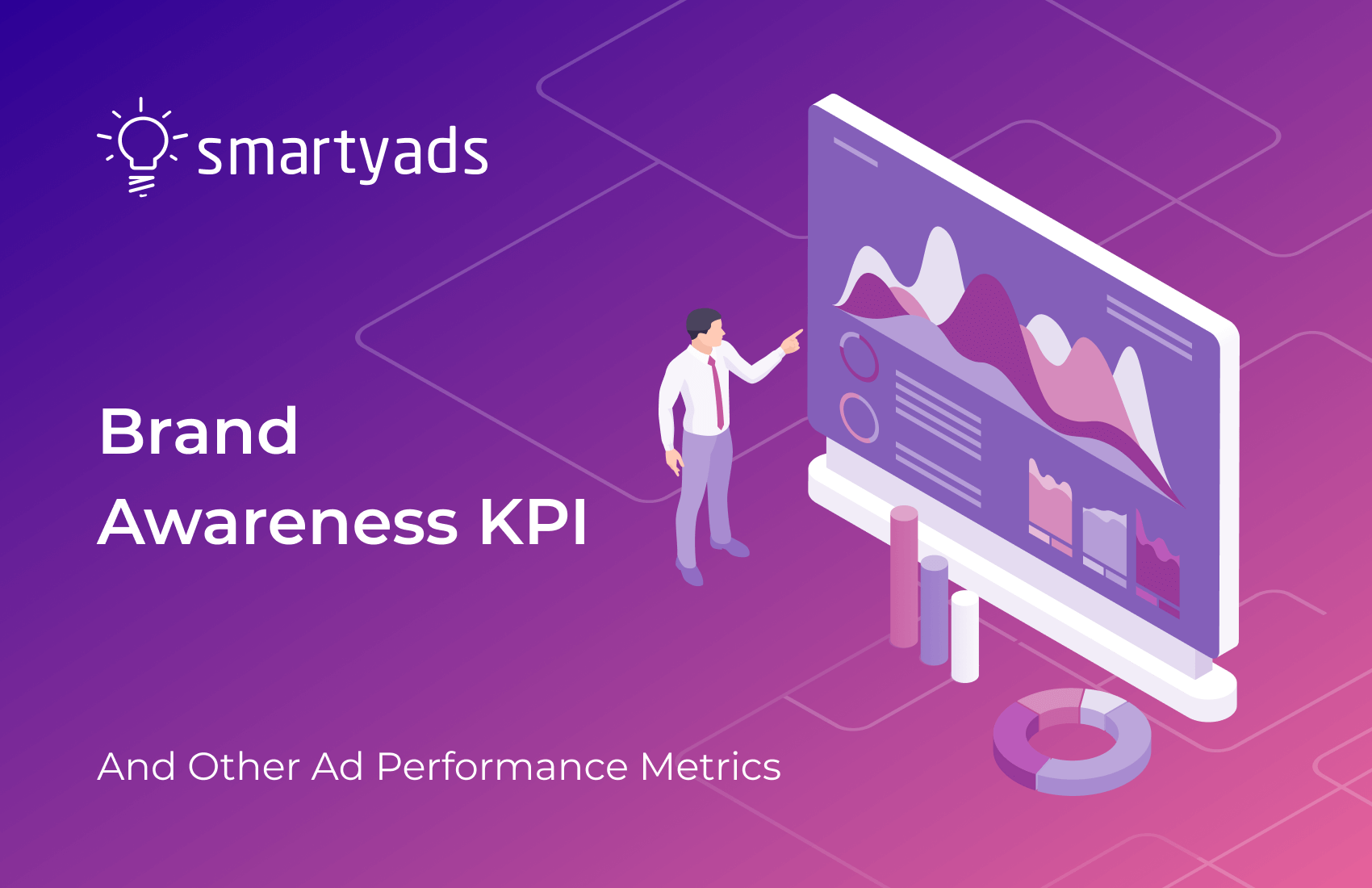Believe it or not, many advertising and marketing specialists do not know the difference between advertising technology (Adtech) and marketing technology (Martech). These technologies are closely related, yet they exist to perform different functions. In order to distinguish ad tech from martech, we will need to dive deeper and understand what each of them is about.

What Is Adtech?
Adtech refers to technologies that make programmatic ad buying and selling possible. Tech advertising covers all of the demand-side platforms, supply-side platforms, and ad exchanges, as well as, DMPs and CDPs which are databases that store users' digital identities.
Thanks to ad-tech, companies can target a very specific audience and reduce wasted spending on advertising. Given that the total digital ad spend is expected to grow by the end of 2021 to more than $129 billion and make up the majority of all US ad spend, ad tech can really maximize your advertising budget by allowing you to focus your efforts on specific audience groups.

What Is Marketing Technology?
Any tools that you use to manage marketing processes such as the creation of the digital content, managing workflows, and customer data and analytics are all covered by the martech umbrella. You will have an even wider selection of tools to choose from given that the marketing tech landscape increased by 27% last year with 6,829 new solutions becoming available. Martech will target current customers and the leads that are on the verge of converting and you can use all of the martech tools to provide them with more customized communication based on their past behavior. This is where a lot of the overlap with the ad tech industry occurs since advertising is the most visible part of marketing. Having said this, there are important differences.
Read here about the difference between CDP and DMP.
What's the Difference Between Adtech and Martech?
Functional Differences
The foundation of ad tech is the campaign: advertisements and all of the data such as unique users, impressions, views, and many other metrics. All of this was designed to give advertisers and ad agencies tools they need in order to create, execute, track and manage digital advertising campaigns across various apps and websites. In turn, ad tech enables those apps and websites to sell all of the ad space they have available, commonly referred to as inventory, to the greatest amount of advertisers via display ads or search engine marketing. Martech is more about sales funnel creation or nurturing leads, and making prospects go through it in order to convert them into customers. Martech involves tools such as A/B testing, SMM, user feedback surveys, etc.
The platforms involved
There are lots of different platforms that comprise the online advertising and marketing. Some of them are used to store and arrange the customer data such as data management platforms, but most of the platforms will be unique to each respective field. For example, only advertisers would use DSPs while only marketers would use email automation tools. Let’s explore the tools and platforms involved in greater detail.

Ad Technology Platforms and Tools
The following platforms are specific to the ad tech industry:
- Demand-side platform. It is an essential platform since it lets media buyers run advertising campaigns and purchase inventory on ad exchanges and SSPs via a single user interface. DSPs are crucial for real-time bidding which enables advertisers to buy media on a per impression basis. In order to offer better targeting and make media buying more effective DSPs use information from data management platforms and data brokers.
- Supply-side platform (SSP). SSPs make it easier for publishers to sell their inventory on all of the various exchanges in an automated, efficient, and secure way. While publishers do not necessarily need an SSP to sell their inventory on an ad exchange, the technologies that are used with SSPs allow them to get the highest price for their inventory and obtain greater insights into their audience.
- Ad exchange. An ad exchange is a dynamic tech platform that makes it easier to buy and sell impressions between advertisers and publishers without intermediaries. Just like the Nasdaq or the Dow Jones stock exchanges manage the stock selling process between investors and companies, ad exchanges do the same thing with impressions between advertisers and publishers.
- Ad network. The inventory that has not been sold will be bought from the publishers by the ad networks. They will run this inventory through their technology and try to sell it to the advertisers.
- Ad server. Determines which ads will be displayed on a website. The ad server must also serve the ad and collect data about its performance such as clicks and impressions.
- Search engine marketing (SEM) platforms. Such platforms use paid advertising to promote a website in order to increase its rankings in search engines. SEM platforms are connected with ad buying and, therefore, belong to the ad tech.

Platforms for Martech
Martech-specific platforms include:
- Data analytics - Collecting and analyzing data obtained on the internet. As well, such platforms deliver more advanced reporting which gives marketers greater optimization insights. These analytics will be used for conducting business and market research and to find ways of improving the effectiveness of a website. Data analytics can include platforms that are already being used today, such as Piwik Pro, as well as those that provide greater insights, such as heat maps.
- SEO - We already mentioned that search engine management belongs in the ad tech category, but all of the SEO tools are Martech.
- CRM - This is a beneficial tool to manage all of the data about customers. Some advanced CRMs allow gathering a colossal pool of customer data.
- Marketing automation - any tools that you use to help streamline marketing process fall under this umbrella term. Such tools include all of the ones mentioned above.
Courting Various Audiences with Adtech/Martech
Display advertising involves a wide net of services to cover as much audience as possible. This will be based on certain targeting parameters such as browsing history, location, behavior, and many others. Still, you are pitching to unknown prospects. Marketing is more about nurturing people who have already shown interest in whatever you are selling and pushing them through all of the stages until they become paying customers.
On a similar note, a lot of ad tech solutions are based on third-party data, such as third-party cookies. Conversely, martech solutions can use a combination of first-party cookies and personally identifiable information such as names and email addresses which are usually voluntarily provided by the users in exchange for a valuable piece of content such as white paper or ebook.
Adtech | Martech | The Mixup Explained | |
Media | Paid media | Free media | Nowadays it is difficult to make a distinction between free and paid media. |
Target | Companies target unknown recipients. | Companies target people they have information about. | Thanks to modern technology, there are no “anonymous” users, therefore it is once again difficult to draw the line. |
Type of Billing | Adtech uses a commission or a fixed fee charged on top of the CPM. | Martech uses SaaS which is usually billed at a flat rate on a monthly basis. | Providers are looking at new revenue models. Adtech tools offered as SaaS and Martech are charging per volume fee. |
Operators | Adtech platforms are operated by ad agencies and advertisers. | Martech platforms are operated by in-house marketing and IT teams. | The services that advertisers must provide nowadays go way beyond paid media and include things that are used by marketers such as SEO, SMM, content marketing, etc. |
Since the creation of the good quality digital strategy requires a comprehensive approach, the silos must be removed between Adtech and Martech in order to ensure data flow and synchronization. This is why the seamless integration of Martech and Adtech has already begun. The fruit of such labor may be what every marketer has always dreamed of, which is having the ability to know what a prospect wants before the customer even knows it.
Smartyads has platforms for Adtech and Martech purposes since we offer robust in-house advertising solutions and the best technology for demand and supply parties.
Contact us today to find out how our team can help your marketing and advertising aims come true!





